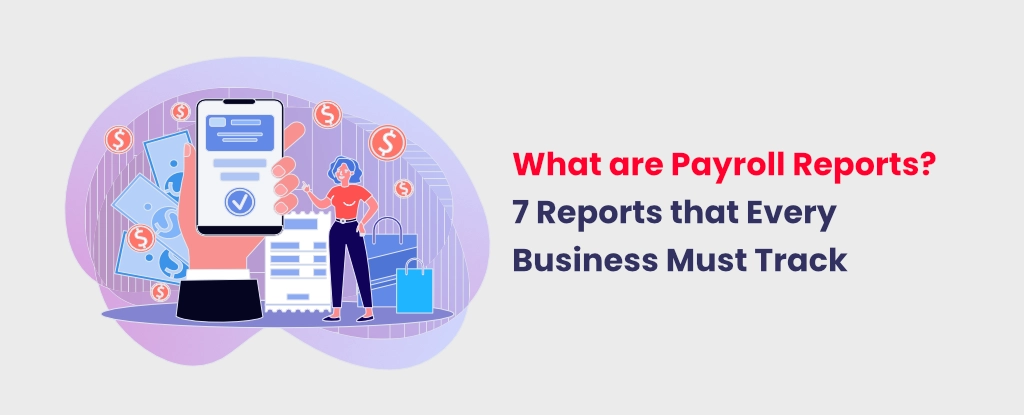For accurate financial management, US business owners must introduce the right financial metrics into their accounting processes. In this blog, we share the list of financial KPIs (Key Performance Indicators) that every US business must track. These KPIs not only help you understand how your business is performing, but they also help you identify areas that need improvement.
What are Financial Metrics?
Financial metrics are numbers that show how well a business is doing with its money. They help you measure profit, expenses, cash flow, and how efficiently the company is being run. Think of them as tools that help you understand whether your business is making money, losing money, or just breaking even.
KPIs help you stay on track with your business goals and make it easier to manage your budget, plan ahead, and use your resources wisely.
Top Financial Performance Metrics to Monitor
1. Gross Profit Margin
Gross profit margin is the percentage of your sales that remains after covering the cost of making your product or delivering your service. In other words, it is what’s left with you after you subtract the cost of making your product or delivering your service (called cost of goods sold, or COGS) and shows what portion of your sales that converts into gross profit.
This financial metric helps you see how efficiently your business is making money from sales. The higher the margin, the better your business is at controlling expenses and generating profits.
Formula for gross profit margin:
Profit Margin = (Gross Profit / Revenue) x 100
Example: If you make $100 in sales and keep $48 after covering direct costs, your gross profit margin is 48%. This means you’re earning 48 cents in gross profit for every dollar sold.
2. Net Profit Margin
Net profit margin (also known as profit margin) is the percentage of total revenue that’s left as profit after paying all your expenses, including rent, salaries, taxes, and the cost of goods sold. It tells you how much actual profit you make per dollar of revenue.
It is calculated as:
Net profit margin = (Net Profit / Total Revenue) x 100
Example: Let’s say your business has made:
Total Sales (Revenue) of $10,000
- The Cost of Goods Sold (COGS): $4,000
- Operating Expenses (rent, salaries, marketing, etc.): $3,000
- Taxes and Other Costs: $1,000
Then:
Net Profit = Revenue – All Expenses (COGS + operating + taxes)
$10,000 – ($4,000 + $3,000 + $1,000) = $2,000
Net Profit Margin = Net Profit ÷ Revenue x 100
$2,000 ÷ $10,000 = 20%
This means that after all your costs are covered, you get only 20 cents for every dollar of sales.
3. Working Capital
Working capital is the money you spend on your day-to-day operations. It’s the difference between what you own (current assets) and what you owe (current liabilities). It is a key financial metric that determines the health of your balance sheet.
If the result is positive, your business has sufficient funds to cover its bills as well as invest in growth. However, if the results are negative, it may signal cash flow problems or an inability to meet short-term obligations, which could put your business at risk.
It is calculated as:
Working Capital = Current Assets – Current Liabilities
It’s a good idea to check this number regularly to keep an eye on your financial health.
4. Current Ratio
The current ratio compares your current assets to your current liabilities. It’s used to see if your business can pay off its short-term financial obligations with the assets it already has.
A low ratio can be a warning sign, while a high one might mean you’re not using your assets efficiently. Thus, a ratio too low or too high both warn of impending issues.
Formula:
Current Ratio = Current Assets ÷ Current Liabilities
5. Quick Ratio
The quick ratio checks how easily your business can cover short-term obligations using liquid assets like cash, not including inventory. The higher the number, the better your short-term financial position.
It is calculated as:
Quick Ratio = (Cash + Accounts Receivable + Short-term Investments) ÷ Current Liabilities
6. Debt-to-Equity Ratio
This is a solvency ratio that shows how much your business relies on borrowed money compared to what the owners have invested. It helps investors and lenders understand the level of financial risk. It shows how well shareholder equity could cover all outstanding debt if the business faced tough times. A high ratio can suggest higher risk, while a lower one usually signals more stability.
It is calculated as:
Debt-to-Equity Ratio = Total Debt ÷ Shareholders’ Equity
7. Cash Conversion Cycle (CCC)
The CCC measures how long it takes to turn your inventory into cash from sales.
It’s useful for seeing how quickly you buy, sell, and collect payments.
Improving these financial performance metrics can boost cash flow and make operations more efficient, especially if you manage inventory and offer payment terms to customers.
8. Accounts Receivable Turnover
Accounts receivable turnover is a financial metric that shows how fast your customers are paying their invoices. A high accounts receivable turnover means your business collects payments quickly and efficiently, which helps maintain steady cash flow. This often reflects strong credit policies and reliable customers.
A low turnover ratio can be a warning sign. It may mean your customers are taking too long to pay – or worse, that you’re struggling to collect at all. That ties up your cash and increases the risk of bad debts.
It is calculated as:
Accounts receivable turnover = Net Credit Sales ÷ Average Accounts Receivable
9. Total Asset Turnover
This metric looks at how much revenue you generate for every dollar of assets you own. A higher number means you’re using your resources efficiently to drive sales.
It is calculated as:
Total Asset Turnover = Net Sales ÷ Total Assets
10. Return on Equity (ROE)
ROE shows how effectively your business uses shareholder money to generate profit. The higher the ROE, the better your business is at turning investment into earnings.
It is calculated as:
ROE = Net Income ÷ Shareholder Equity
11. Return on Assets (ROA)
ROA tells you how effectively your company is using its assets to generate profit over time. It helps you understand how much income you’re earning for every dollar of assets you own. An ROA above 5% is usually good. And over 20% is excellent.
It is calculated as:
ROA = Net Profit ÷ Total Assets
Which of These Numbers Are You Already Tracking?
Understanding and regularly reviewing the right financial metrics can be the difference between simply running a business and strategically growing one. Whether you’re fine-tuning daily operations or planning long-term goals, accurately tracking your numbers will provide the clarity you need to move forward with confidence.
Don’t let the data overwhelm you – start with the basics, track consistently, and adjust as you grow.
And remember, you’re not alone in the number maze. If you need help or guidance, experts at KnowVisory Global are here to help. So, if you’re unsure which numbers matter most for your business, feel free to reach out. Schedule an appointment with our experts, and we’ll help you figure out where to focus.


